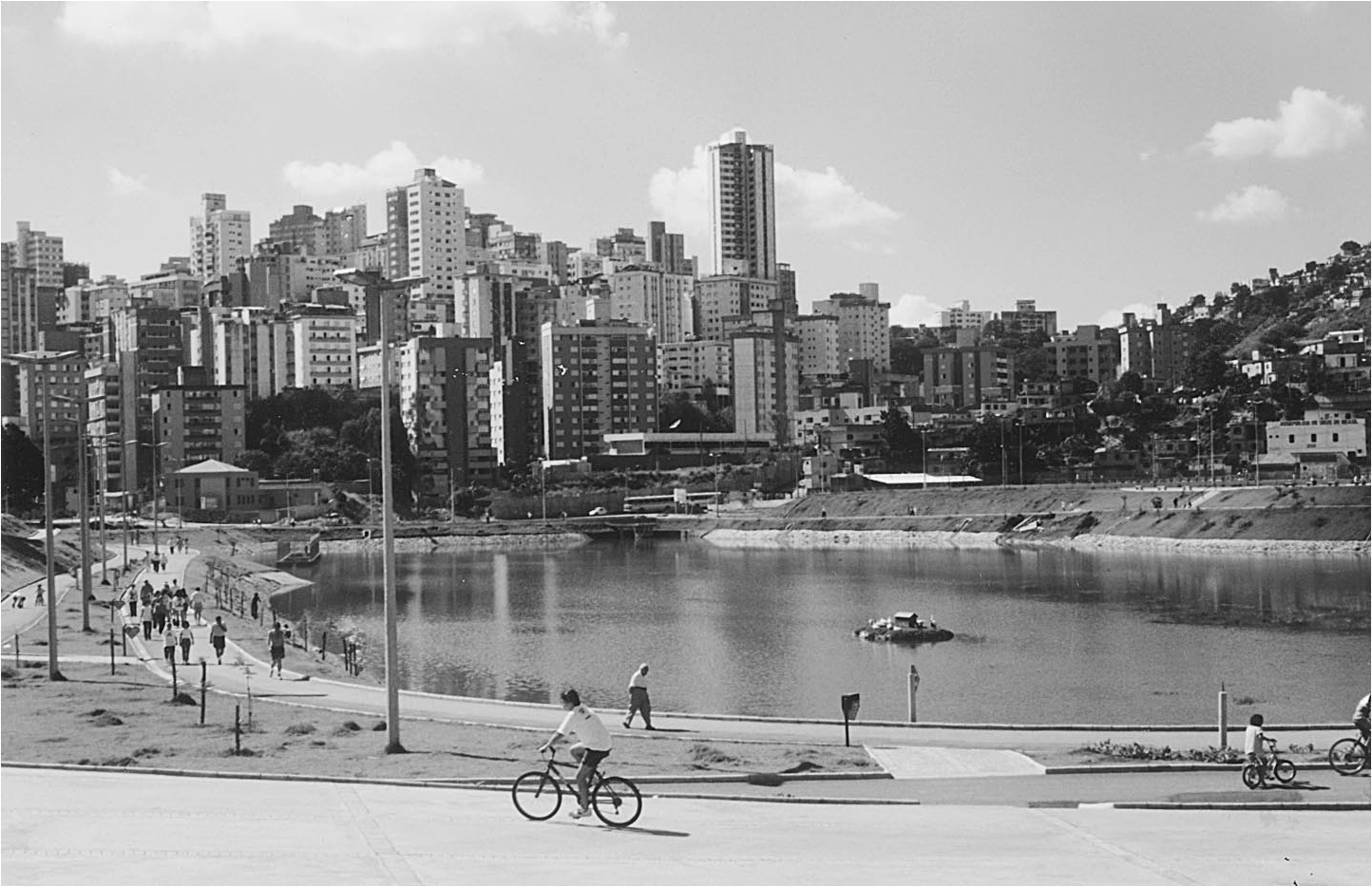8. Green Roofs | 9. Detention Ponds | .
Dentention Ponds
 |
| Detention Pond in Santa Lucia, Brazil |
| Image courtesy Nasciamento, 1999 |
What is a Detention Pond?
A detenetion pond, or "detention basin," is a large, constructed depression in an urban landscape that receives and stores the stormwater runoff from large drainage areas. Detention basins usually hold a permanent pond of water, and are sometimes called "wet basins."
Similarly, a retention basin is a depression that also collects and slowly releases stormwater from large drainage areas. However, a retention basin is different because it is not permanently covered with standing water. The attribute gives them the name "dry basins." A rain garden is a type of small retention basin.
Why use Detention Ponds?
Detention ponds are an excellent way to naturalize the stormwater patterns of a larger urban area. Rain gardens, infiltration trenches and bioswales collect stormwater runoff from smaller areas, and are most effective when used to treat the water from one urban land parcel. However, detention ponds are so large, and hold so much water that they are more effective when implemented at the community level.
How do they manage stormwater?
Detention ponds primarily manage stormwater quantity, but also somewhat contribute to treating the water quality. When it rains over a detention pond's drainage area, the runoff water either travels to the pond across the land surface or is routed there by gutters or underground pipes. In some cases, the water is passed through a pretreatment wetland or sedimentation tank. These additional treatment cells are included to remove extra sediment and dissolved pollutants from the water. Once the water leaves these pretreatment cells, it then enters into the permanent pond and slightly raises the water level. Because they are a designated area for water storage, detention ponds prevent water from flooding in the community's developed areas.
The runoff is stored in the pond, and slowly released in the storm water sewer system. The storage-release process reduces the peak runoff volumes and runoff rates. The implications of these reductions in "quanity" are that the stormwater sewer system and treatment facility can be designed to handle smaller volumes. Also, when the water pools in the basin, its velocity is significantly reduced. This allows suspended sediments to sink to the bottom of the pond, and the organic pollutants to be digested by the organisms present in the pond. This improves the water "quality."
Are there any other benefits to using Detention Ponds?
Wet detention basins are sometimes welcomed in urban communities because the fresh body of water can be used for recreational activities like boating, fishing and swimming. Also, the aquatic ecosystem welcomes new species of wildlife to the area. However, as with any water-side recreation, safety is always a consideration. In fact, many detention ponds are often fenced in to prevent injuries
Dry, retention basins are usually grassed covered. The added greenspace offers a different set of recreation opportunities like those associated with parkland and ball fields
Are there any constraints / design considerations?
When designing a detention basin, the first, most obvious constraint is land availability. Is there enough available area to install a pond that can collect the volume of runoff generated by the design rain event? Increasing the depth of the pond would seem to be a way of increasing pond volume, without extending the surface area. However, the water depth must not be so deep that (1) the bottom of the pond is anoxic or (2) the pond begins to stratify itself thermally.
Another design consideration is what to do with the runoff water when the pond overflows. One potential solution is to include a grass spillway that would ensure the excess water is transported away from any developed area.





